mvp
prototype
proofofconcept
Proof of concept in the software development process
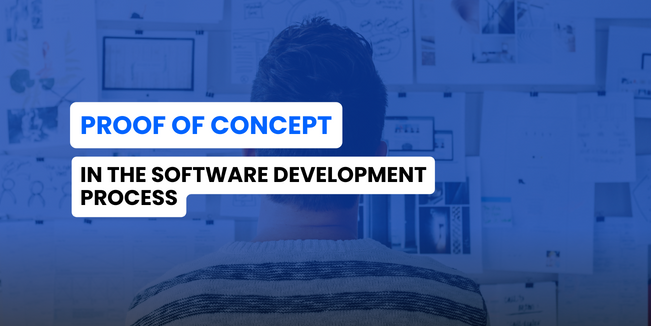
style="text-align: start">When creating a new product, you must ensure that the right product-market fit solution addresses your customers' actual problems, for example, by starting the concept process a Product Discovery. This article will explain the proof of concept in the software development process and show you the best practices to create a successful one. You will get information about the differences between PoC, Prototype, and Minimum Viable Product.
The key element of successful Proof of Concept is certainly understanding the software development life cycle concept. If it is foreign to you, you should read our article "Software development life cycle - Guide," in which you will learn what SDLC is and why it is so important to know what it means.
Proof of concept is misunderstood by non-technical project managers and technical teams, which leads to misunderstanding and time-wasting. As an insourcing company, we often encounter such a situation, so we want to dispel all doubts in the following article.
What is a Proof of Concept (PoC) in Software Development?
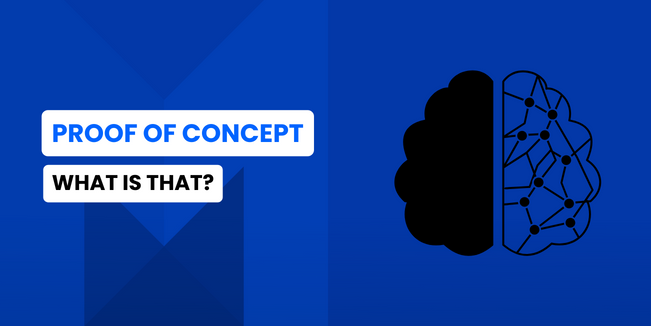
We have to start from the beginning, so what is Proof of Concept (PoC)? In the short version, this project aims to find out whether the software idea is technically feasible.
Almost 66% of startup companies fail to return any money to investors. What is the cause of failure? Most businesses start launching product development immediately so they can start working on their solution as soon as possible. This is a risky action that will lead to a failed outcome. Successful software development begins with a proof of concept. This is a software testing methodology which assists businesses with rationally determining new software products and defining their future.
Proof of principle (another name for PoC) demonstrates the idea's viability of a technique or concept is defined as proving it in practice. The term proof of concept comes from mathematics. It refers to a mathematical proof that demonstrates the possibility of something, such as an equation showing that an equation could work using certain assumptions.
A proof of a concept document is often small.
The idea is to conduct these joint experiments to evaluate the viability of business ideas and plans for resolving company issues and accelerating business innovation goals.
It is not necessary to conduct a POC if the concept is already available on the market. If your business is inventing, the practical application of the new concept is a questionable notion. It is utilized before the product goes on sale and throughout product development process. Because it tests whether the concept is technically feasible, Proof of Concept isn't available to every customer. Because it verifies whether the idea is operationally feasible, it's not usable. Depending on the initial research, PoC app development enables you to determine whether or not your product is technically flawless. It might be stopped or altered at the start if it doesn't work.
PoC, Prototype, and MVP in software development
Now is the time to learn about when to apply the Proof of concept approach. I'll include it in a broader context of project management's “Software Development Life Cycle” and show you the whole product development team part of the product roadmap from the very beginning to the finished product. Imagine you've got an idea for a theoretical mobile app linked to a particular machine for rapid learning. This method lets users learn something new or study a topic instantly by connecting their brains to the device. It's kind of like in The Matrix movie. We define our target group during the brainstorming and planning process, how this solution works, and which problems it responds to. We initially distinguish the functionalities that differentiate our product from the competition. But is it enough for us to be sure about the shape of the final product? Of course not!
Proof of concept of our "Matrix" project
After our business idea took shape, we needed answers to questions, such as whether we knew what technologies to use and a structured user onboarding process. But the first question is: Is it feasible in the real world? Its application flow, whether we know the cost and duration of building the solution, whether our application meets the needs of our potential users, etc.
POC has two alternatives for you if you're unfamiliar with concept viability: yes or no. If you get a favorable response, you may continue to build your project, but an unfavorable reaction will prevent you from continuing with a potentially nonviable project. As part of an internal approach, POC process flow isn't intended to be shown to your users (in some cases, you can build PoC for some users, but it depends on the situation); it's only there to handle significant concerns. Offering it to potential investors might be useful in obtaining seed financing. We are doing that on our Feasibility and Discovery Workshop.
When should you use a Proof of Concept?
A POC is the first step toward the software development of final project into a complete product. If the statements below are consistent with your present objectives, you may use this technique for a few reasons:
-
When developing a new product with an untested concept.
-
Before investing your time, energy, and resources into a product, you should receive software development proof of the viability of your concept.
-
Remember to double-check your product's industrial usefulness after you've made your first investment.
-
Do not bring back a technology that you previously implemented in your industry.
-
When you want to communicate your software product and knowledge with the rest of the team.
Why is a Proof of Concept Important? Benefits of this approach
-
POC proves that your software idea can be a unique product
-
Attract investors. A POC is most successful in attracting investments and investors interested in the original idea and funding-proven concepts at early stages
-
Save time and money
-
You will get tangible proof that your business plan makes sense.
-
Your team will be on the same page
-
You will have a clear idea of what to implement and know which particular problem your final product addresses
-
You will reduce risks and possible challenges like false values, technical issues, and other pain points
-
Staying ahead of the competition. You will have a clear picture of unique features (but you must test them with customers) and find solutions to attract future users
-
You can select the best technology stack for the software based on your needs
-
Ability to reduce and enhance the efficiency of testing and validating ideas for software functioning
-
Onboarding first clients to an early version before an official software release
Prototype of "Matrix" project
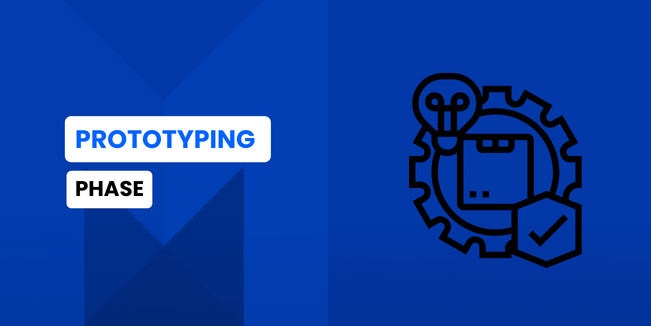
If we know that our software project idea is feasible, let's assume that our Matrix project is like this. We have the documentation we have created or received after the Workshop with a good software house, and we can go to the next stage.
Now we would like to see what our product can look like. This phase we call prototyping (we expand this topic on our mDev blog: https://mdevelopers.com/blog/what-is-a-prototype). That step is more time-consuming, but that will give you the shape of a future product.
A prototype is a simulated eye of your items that reflect the major design features and determine the user journeys. It concentrates on determining the product's aesthetic and understanding the fundamental project management procedures in the product development specific process.
Our Matrix prototype will show how an app will flow from one screen to another and process the app development. We visualize the idea using the UX before we start developing your project.
UI/UX process
Perhaps the first attempt will not suit us, so at the very beginning, we do not focus on design but on where what elements are to be placed. After collecting feedback and adjusting it to our end users, we will create individual graphics. See our articles about “Golden Rules of UX” and boosting your application engagement in “6 ways to boost your mobile app engagement & user retention”.
The user experience will be the most crucial component of your app. It must account for anything that may impact how clients react to what they see on-screen while also considering the user experience. It implies becoming familiar with all aspects of their lives to better meet their demands by understanding how people use technology in their daily lives.
Design Process
What exactly will our actual product be like? This first step by step process is to create the whole design, animations, colors, etc. After collecting feedback from the UX process, designers can shape the app (Matrix) to real life.
When should you use a Prototype?
After creating a Proof Of Concept, you can move further to the prototype stage. Some clues that reveal your need significant resources to begin developing a prototype:
-
When you're trying to get a feel for how the product will feel and what it'll look like in the long run
-
When you don't have much time or money to show off your product's design and UX flow to entice investors
-
You want to create a product with excellent user flow and UX
-
When you have a specific deadline for presenting your concept to potential investors
Benefits of Prototype approach
-
Validation of the design concept. You may perform numerous tests on a design until you achieve the required result
-
Reduce costs with this software. It aids in detecting design flaws before product development, prevention of rework, and savings on expenses
-
Immediate feedback. You get direct input from real people while testing the prototype, which allows you to quickly identify flaws, correct them, and move forward with development
-
Investing in an idea is never easy. You may persuade your investors that your concept is worthwhile investing in if you have a proven prototype with an excellent appearance
Difference between Prototype and Proof of concept?
Ok, we have tested the Prototype and design for our Matrix product. This stage is crucial for further testing. Right now, we can build a working model called MVP. We expand that topic on our blog: https://mdevelopers.com/blog/build-your-mvp-minimum-viable-product-the-right-way-step-by-step-guide-by-mdevelopers
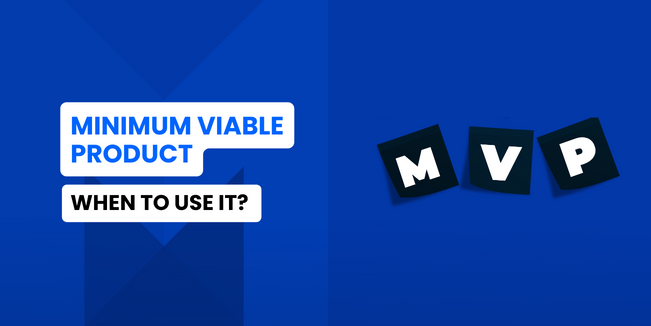
An MVP must have a set of features to serve consumers and obtain rapid valuable feedback for future improvement. An MVP must have feature to serve consumers and obtain rapid valuable feedback for future improvement. Because you aren't sure what your product will become, you choose an iterative process that entails creating simple versions of your product with only essential features or even just a single feature, testing it with real consumers, and forwarding the developer comments. It is a vast test of the product idea and technologies we choose; we give an excellent example of how our application works and what users can achieve using a developed product.
Maybe Matrix can be the new drug for Alzheimer's?
When should you use an MVP?
After a business has decided on the essential features, understands the target market and demands (PoC), and has a model (Prototype), it may develop the MVP.
Keep in mind that an MVP is not lower quality than a final product but still needs to fulfill the customer's needs, and this is the moment when we can carry out extensive testing without having to invest investing significant resources or large amounts of money.
-
You want to spend the least amount of time and money on your product's development, including having the right features
-
You want to get immediate user feedback that can help you build a final product
-
When you need better retention at a lower cost
Benefits of MVP
-
Cost reduction through time and money optimization. The MVP is a device that takes less time and money to create, enabling you to plan your development road ahead of time
-
An essential component of any product launch is creating a hook for your first user. The MVP isn't a fully developed product, but you may start selling it and earn your first paying customer
-
It's a chance to pique investors' interest. Nobody wants to invest in a concept with uncertain market demand. A well-developed MVP that obtains good user feedback is excellent proof for investors
Difference between MVP and Proof of concept?
A minimum viable product, or MVP, is a workable product with minimal functions that provide users with the required features.An MVP lets you determine how consumers respond to a product and what they like and anticipate receiving later. Proof of concept validates proposed idea and technical feasibility, MVP validates the initial likeability of the product.
If you would like to find out what specific differences are between PoC, Prototype, and MVP, we have prepared an infographic for you to download. Enjoy;)
Key Considerations Before Developing an MVP, Prototype, or POC
You need to answer and comprehend only a few questions before deciding whether to create a POC, MVP, or Prototype.You're ready to select from these three once you've classified the responses to these questions.
-
Is your concept one-of-a-kind?
-
What do you wish to double-check?
-
Is it necessary to find out if your target audience requires your product?
-
Who is your target audience?
-
What are your validation criteria?
-
What are your company's priorities?
-
What are your budget, time, and effort limits?
-
What is your greatest ambition in terms of productivity?
-
Is your technology for the project discussed?
If answers to the above questions are YES, you need to go the safe way and develop from proof of concept to prototype to MVP.
If you need a helping hand with how to choose wisely approach, contact us: https://mdevelopers.com/free-consultation
Are PoCs software development services?
Yes! We have created a series of workshops, and one of them is for creating Proof of Concept.
Summary
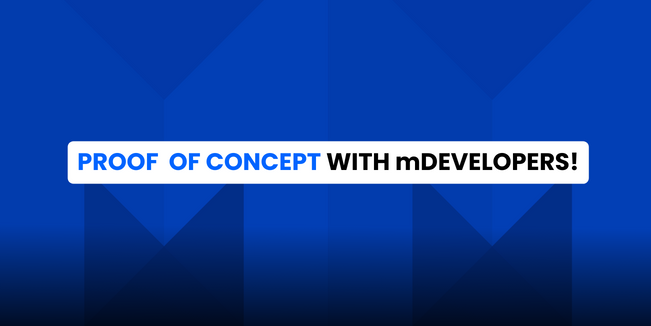
Developing a product is similar to researching with a purpose in mind. The process begins with laying the groundwork to establish a POC and prototype, followed by an MVP. The only MVP mentioned so far is a fantastic example of a working product, but that does not negate the influence of the other two methods.